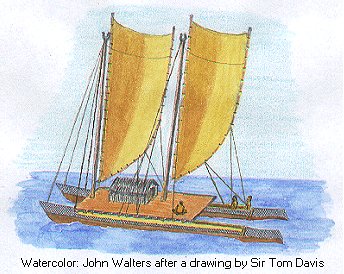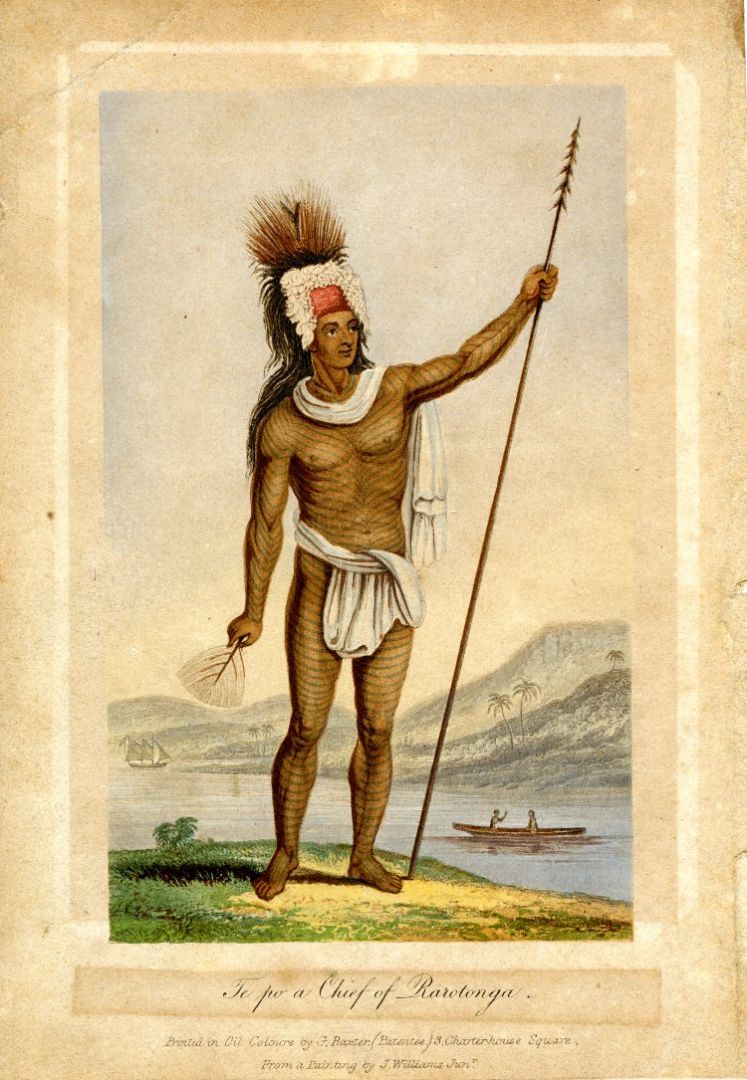Cook Islands History Part 1
Cook Island History Part 1 - Pre European
Cook Islanders are true Polynesians, some of the finest seafarers of the Pacific, voyagers on twin-hulled sailing canoes called Vakas who felt at home on the ocean and who travelled across its huge wastes in search of new lands and new beginnings. The journeys undertaken by these brave people in their Vakas can be compared to the voyages of exploration boasted of by the Portuguese, Spanish, British, Dutch, and French.
Over-population on many of the tiny islands of Polynesia led to these oceanic migrations. Tradition has it that this was the reason for the expedition of Ru, from Tupua'i in French Polynesia, who landed on Aitutaki and Tangiia, also from French Polynesia, who are believed to have arrived on Rarotonga around 800 AD.
Some evidence for this is that the old road of Toi, the Ara Metua which runs around most of Rarotonga, is believed to be at least 1200 years old.
Similarly, the northern islands were probably settled by expeditions from Samoa and Tonga. As was common with most patterns of Polynesian migration, expanding population and pressure on resources resulted in the ocean-going Vakas being stocked with food and set off to look for more living space.
Cook Islanders are convinced that the great Maori migrations to New Zealand began from Rarotonga as early as the fifth century AD. The most favoured location for the starting point was Ngatangiia on the eastern side of Rarotonga where there is a gap in the fringing reef at the widest part of the island's lagoon.
This gap is now known as Avana Harbour, where the ocean enters Muri Lagoon. It is a great place to view whales, surf and fish, and can be snorkelled in the right conditions and with local knowledge.
Edited Source: www.ck/history.hmt


What our previous guests have said
We had the most amazing 5 day visit to Raro in August! Muri retreat was exceptional, and had absolutely everything we needed to enjoy our stay. One of our
Molly | 12th September 2025, New Zealand
Wow!! Was the word used by myself and my girlfriend as soon as we arrived at our room Kaute. With an amazing setting and stunning view. We instantly settled
David | 15th June 2025, England | UK
We arranged for airport transfer, was provided with very detailed instructions on when and where to meet. The apartment was clean, spacious, and kitchen as
Erica | 10th June 2025, Canada
Communication before the stay was very informative and comprehensive with information and pick-up options. Simon's airport worked out great. Both when we
Anja | 4th June 2025, Germany
Excellent stay, very warm welcome, Denise and Simon do everything they can to make sure we have a wonderful time.The house is magnificent, nestling in the
Laurent | 14th March 2025, France
Simon is a very funny guy and accommodation is very nice, make sure u book the Apartments on top! The view is fantastic! 5/5 Source: Google Reviews
Yves | 5th March 2025, Germany
Had a wonderful time at Muri Retreat. Simon and Denise were amazing hosts who could not do enough for us. We would recommend this accomodation to anyone. The
Bronwyn | 23rd November 2024, New Zealand
It is so relaxing and quiet here. The hosts Denise & Simon are very helpful. 10/10 Source: Booking.com reviews
Ines | 19th December 2024, Germany
Comfy, clean and private. Perfect Location very close to Muri beach and night market, the place was clean and had everything that we needed to keep the place
Nittsy | 15th Februray 2025, Chile and New Zealand
Fantastic apartment in Muri. Excellent apartment that does not lack detail, full kitchen, ceiling fan, fridge.....my stay was fantastic, they helped me at all
Oscar | 12th October 2024, Spain
